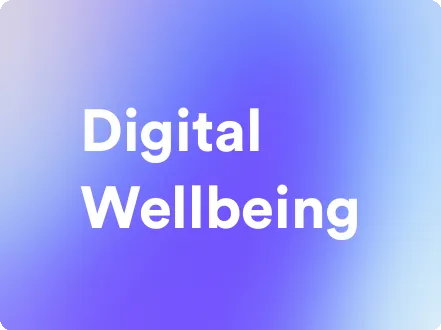Digital Wellbeing: A Guide to Maintaining Balance in the Digital Age
This guide will walk you through the essential elements of using digital wellbeing - the productivity method to keep your team productive and engaged.
Try Lark for Free
In today's fast-paced and highly connected world, digital wellbeing has emerged as a crucial concept. This article will provide you with a comprehensive understanding of digital wellbeing, including its origin, target audience, benefits and drawbacks, and actionable steps to incorporate it into your life. By the end of this guide, you will be equipped with the knowledge and tools to improve your overall wellbeing in the digital realm.
What is Digital Wellbeing in the Context of Productivity?
Digital wellbeing encompasses the impact of digital technology on our overall health, happiness, and productivity. It refers to managing the influence of digital devices and platforms on our mental and physical wellness. In relation to productivity, digital wellbeing involves optimizing our interaction with technology to minimize distractions and enhance our ability to focus and achieve our goals. Striking the right balance can lead to improved efficiency and reduced stress in our personal and professional lives.
The Origin of Digital Wellbeing
The concept of digital wellbeing gained prominence with the rise of digital technology and its pervasive influence on daily life. As smartphones, social media, and digital entertainment became integral parts of modern existence, concerns about their impact on mental health, sleep patterns, and overall happiness grew. Tech giants and health professionals began addressing these issues, leading to the development of digital wellbeing as a holistic approach to mitigate the potential negative effects of technology.
Use Lark to unleash your team productivity.
Who is Digital Wellbeing for?
Digital wellbeing is relevant to individuals of all ages and backgrounds who engage with digital devices and online platforms. It holds particular significance for students, professionals, parents, and anyone who spends a significant amount of time using digital technology. Furthermore, organizations and institutions are increasingly recognizing the importance of promoting digital wellbeing among their members to foster a healthier and more productive environment.
Pros and Cons of Digital Wellbeing
Benefits of Digital Wellbeing
- Enhances focus and productivity
- Improves sleep patterns and mental health
- Encourages mindful and intentional technology use
- Strengthens interpersonal relationships by reducing screen time
- Supports a healthier work-life balance
Drawbacks of Overlooking Digital Wellbeing
- Increased risk of technology addiction and digital stress
- Negative impact on physical and mental health due to excessive screen time
- Impaired cognitive functions and reduced attention spans
- Disrupted sleep patterns and heightened anxiety levels
Learn more about Lark x Productivity
How to Get Started with Digital Wellbeing
Embracing digital wellbeing involves a multi-faceted approach that addresses various aspects of our digital lives. Here are the primary steps to embark on your digital wellbeing journey:
1. Conduct a Digital Audit
Assess your current digital habits, including screen time, social media usage, and reliance on digital devices. Identify areas that may require moderation or adjustment.
2. Set Boundaries and Limits
Establish clear boundaries for when and how you engage with digital technology. Define specific times for digital detox or unplugging from devices to create pockets of tech-free time.
3. Prioritize Offline Activities
Allocate time for non-digital pursuits such as physical exercise, hobbies, reading, or socializing in person. Balancing screen time with real-world experiences is essential for overall wellbeing.
4. Utilize Digital Wellbeing Tools
Leverage built-in features and third-party applications designed to monitor and manage screen time, bedtime schedules, and notifications on your devices.
5. Foster Digital Mindfulness
Practice conscious and deliberate use of technology by being mindful of the content you consume and the interactions you engage in online.
Use Lark to unleash your team productivity.
Actionable Tips for Digital Wellbeing
Do's
| Do's |
|---|
| Limit screen time before bed |
| Take regular breaks from digital devices |
| Establish tech-free zones in your home |
| Engage in physical activities outside of the digital realm |
| Utilize technology to enhance mental wellness, such as meditation apps and digital journaling |
Dont's
| Dont's |
|---|
| Engage in excessive social media scrolling |
| Ignore the impact of blue light on sleep patterns |
| Multitask excessively with digital devices |
| Allow digital technology to replace in-person interactions and activities |
| Disregard the importance of digital downtime for mental rejuvenation |
Conclusion
In conclusion, prioritizing digital wellbeing is essential for navigating the modern digital landscape while safeguarding our mental, emotional, and physical health. By implementing the recommended strategies and being mindful of our digital habits, we can cultivate a harmonious relationship with technology that enriches our lives rather than detracting from it.
